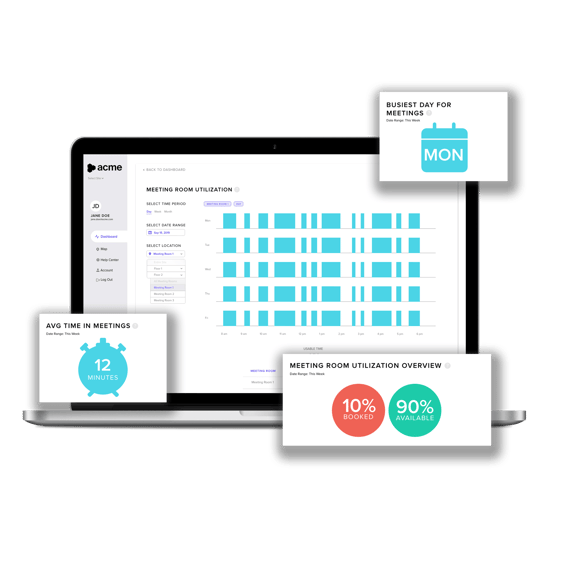The New Way To Look at Office Real Estate
The way companies use their office space has been changed forever by the COVID-19 pandemic. What once was a constant, now poses many questions to employees and managers alike.
Is it financially viable to have large communal office space?
Can profitability increase if space is minimized? How has human behavior in the office changed? Real estate is a large and costly investment that can greatly impact a company’s ROI, so how do employers manage the uncertainty of space in our new work landscape?

Andrew Lawson, Founder of Workspace Solutions aims to help put an end, or at least address, some of these concerns. Andrew works as a real estate strategist, and at Flat Iron Building Group he provides construction services and guidance on office projects.
To Grow, Shrink, or Maintain?
We all understand that the workplace has changed drastically over the past couple years, and that the way in which offices use space may need to adjust to meet the current needs of its employees.
“The number one thing that we see are business leaders who can't make decisions on their real estate,” Andrew says. “COVID caused peoples behaviors to drastically change, specifically how and where they work and business leaders are not sure how to plan for that with their real estate footprint. ”
Clients know their lease is up, and want to make informed decisions that are right them, and an effective use of their resources. However, they don’t know if they should grow, shrink, or maintain their current size.
“They're just guessing as to what they need, and guessing can have expensive outcomes.”
Businesses are interested in how to effectively use their real estate, and strategists like Andrew need data to help them make informed decisions about their space utilization.
“It’s a very difficult decision to make. Because even if you start measuring space utilization today, it can't predict what's going to happen in the future. But it will provide more data than you have ever had, which is zero.”
Andrew recently advised a visual effects company that just deployed a work-from-home system. This was not previously feasible because of their sophisticated technical set up. They are now trying to determine if they should drop their lease and go fully remote. However, the lack of concrete data makes this decision difficult.
“What should they do with their space, should they shrink, should they take on new space, should they retrofit their current space?” Andrew says. “They tell me things like, it looks busy today – but its all subjective”
When making major decisions about your company’s space, it’s invaluable to know how it gets used, how much it gets used, and which team uses it.
Alternatively, another one of Andrew’s clients has a 24 person meeting room.
“Which in my view is absurd,” Andrew adds. “Nobody uses a 24-person meeting room efficiently.”
“But this company thinks they need it. They think they use it. And I guarantee they don’t. I would love to do a space utilization study to prove it.”

Can Better Data Cut Costs?
So, how do we fix these issues? The answer is simple: better data.
The better your data is, the more informed your decisions can be. Companies should strive to make more informed decisions, because this understanding can save them money in the long run.
“If a company can save half their real estate costs, they're going to go to that route, provided it doesn't obliterate their entire culture.” It is their responsibility.
When you are dealing with real estate, the cost is never low. The act of building out an office space can cost you large amounts of money, so making sure the space appropriately meets your needs is key. Especially when building upon existing infrastructure and buildings.
“You could spend $10 million on a build, but if it doesn’t meet your needs, it's not going to be as valuable as, say, a $1 million build that does meet your needs.”
Gone are the days when the CEO’s preferences guide the make up of your office spaces.
“[That is] not really where we’re at,” Andrew says. "Offices have to reflect the strategy and the strategy should be backed by data.”
And opinion polls, office surveys, and people counting are simply not enough, especially compared to objective data.
“People would say we need at least 15, 10-person meeting rooms… they usually don’t.” Andrew says. “Doing a utilization study would show them what they really need are 10, four-person meeting rooms that are unbookable.”
Sometimes, people just do not have the right experience to bring to the problem, which can leave gaps in the knowledge, data, and strategy.

Removing the Guesswork from Location Data with Indoorology
So how do we close this gap between guessing and knowing what people do – and what that could mean for your real estate footprint?
At InnerSpace, we want to remove the guesswork from office planning using Indoorology.
Indoorology is the study of our behavior, indoors. The indoors is a finite resource. To make the most of our indoor spaces, we must adapt them to the ever-changing ways people use them. This requires the science to deeply understand our behavior indoors. Using InnerSpace’s proprietary technology it replaces what we feel, with what we know, based on objective data and repeatable processes. It helps with our understanding of our interaction with indoor spaces and informs the design of solutions, allowing us to perfect our indoor experience.
Using Indoorology features to run a utilization study that goes beyond “how many” can help you determine if you have enough, too little or too much space. The outcome of which is always positive, because you have the information and data you need to adjust your space to meet your budget and satisfy everyone.
“People are making big financial decisions without data, and I know they could be making much better decisions for their business,” says Andrew. “I encourage everyone to get some actual data.”
Indoorology is a helpful tool that not only helps you to understand how your space is used, but also helps you to focus on efficiently use your resources and ensures you have a healthy ROI. Employers should not be making large scale financial decisions without data, Indoorology can help you max your profitability and increase sales while also curating an enjoyable space for your employees.
For more from Andrew about how valuable insights from accurate data are crucial to your office real estate, download the our latest guide.
Accurate space utilization data through Wi-Fi?
We'll prove it to you.
See why industry leaders leverage InnerSpace to generate valuable insights that go beyond occupancy.


